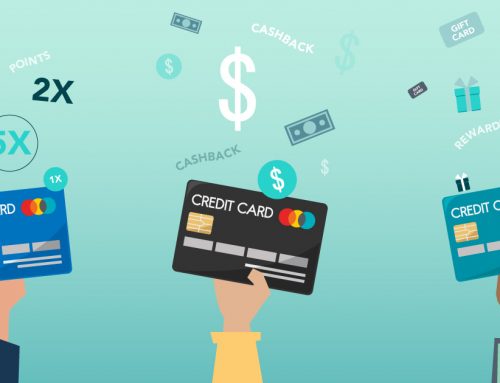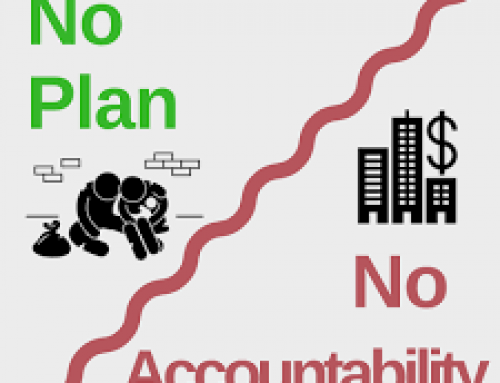Now that it’s been a minute since SVB collapsed, it’s time to answer some questions and examine how best to move forward.
 The collapse of Silicon Valley Bank (SVB) is already one of the most significant events of 2023.
The collapse of Silicon Valley Bank (SVB) is already one of the most significant events of 2023.
That’s why I quickly wrote an article about how the bank went from “hot to not” in a matter of 48 hours. Believe it or not, the SVB failure happened just a month after Forbes listed it as “one of America’s best banks.” Whoops!
But perhaps more staggering was the widespread panic that ensued last week…
Bank customers withdrew a total of $42 billion from their SVB accounts in ONE day on March 9th. This is known as a “bank run.”
To put that into proper context, during the next largest bank run in 2008, Washington Mutual customers withdrew $16.7 billion over TEN days before that bank closed.
In other words, the run on SVB was truly epic.
So how can digital nomads understand this situation and its potential future implications a little bit better?
Well, you can start by exploring the following answers to a few questions…
FAQ: After the SVB Collapse
Following are a few common questions that savvy bank customers (and digital nomads) may be wondering about. I tried to provide a good starting point in answering them. After all, this is still a developing situation.
I also provide one fast solution that can help you starting today, if you’re so inclined.
- How exactly did SVB fail?
I mainly addressed this question in my previous message. For bank customers, it boiled down to a simple idea that I’ll repeat here:
Banks should have a heightened awareness that people can drain their accounts with the click of a button. Which means banks need to make sure people are keeping their money in the bank, by incentivizing them to do so.
The U.S. media is trying to spin it as though the “sudden bank run caused SVB’s failure,” but that’s pure bunk (and hilarious).
The bottom line is this, put simply: SVB lacked liquidity after losses from poor tech industry investments during the pandemic. Before panic set in, “top” customers at the bank were also warned to remove their money (which is unethical, possibly criminal).
Once word got out that the bank was failing, customers naturally panicked, then the big $42 billion bank run began.
But that’s the weird thing, the bank’s failure didn’t just crop up overnight, even though it might have looked that way to the general public. Case in point…
- The Fed seemed aware of SVB’s problems in late 2022, so why didn’t they do anything at that time?
The Federal Reserve got caught in a trap towards the end of 2022:
They were raising rates to combat inflation, while at the same time, SVB was heavily invested in Treasuries and mortgage-backed securities. Higher rates meant those investments started to lose money.
Morgan Stanley CIO further confirms the Fed’s conundrum in a recent statement:
“In short, Fed policy is starting to bite, and it’s unlikely to reverse even if the Fed were to pause its rate hikes or quantitative tightening—i.e., the die is cast for further earnings disappointments relative to consensus and company expectations.”
That basically means the Fed wasn’t going to do much in late 2022, and they aren’t going to be able to do much now.
A piece from NTD News doesn’t inspire any more confidence about the Fed’s predicament, either: “President Joe Biden delivered an address on Sunday, assuring investors that the U.S. financial system is “safe” despite the collapse of SVB and the closure of Signature Bank last week.”
Two bank closures during what Biden has claimed is “the strongest economy ever” don’t exactly give me the feeling that things are going well in the banking system.
Which leads to the next logical question…
- Are there other banks that appear to have issues right now?
Short answer: Yes. The longer answer was given in a CNBC piece that highlighted Moody’s downgrading the entire U.S. banking system in light of the current closures. The same piece also revealed the possible candidates for bank failure in the future:
“Banks with substantial unrealized securities losses and with non-retail and uninsured US depositors may still be more sensitive to depositor competition or ultimate flight, with adverse effects on funding, liquidity, earnings and capital,” the report said.
[…] Moody’s on Monday downgraded Signature Bank and said it would remove all ratings. It placed the following institutions under review for potential downgrades: First Republic, Intrust Financial, UMB, Zions Bancorp, Western Alliance and Comerica
With that out of the way, we can get to some snappier answers to the important questions that will affect digital nomads and those who aspire to be.
- Did they want SVB and a few other banks to fail?
“Want” is a strong word, even if it might be the right one. But now that banks are beginning to fail, the U.S. elite are probably salivating, and here’s why:
They have an opportunity for another “problem, reaction, solution.” The problem? Bank failures. The reaction? They are already reassuring you access to your money.
The solution? Consolidate banking to centralize power for the elite. That, plus the next answer to the next question…
- Do these bank failures give the Fed more reason to implement CBDC?
Yes, of course they do. Treasury Secretary Janet Yellen has already hinted at a “new dawn of banking regulation.” The Federal Reserve just finished a 12-week pilot program for a Central Bank Digital Currency. Coincidence? Probably not.
The current bank crisis means the Federal Reserve also “has” to heal a sick banking system, and fast. Problem. Reaction. Solution.
That solution could include the official issuance of a CBDC in the U.S.
- What are some risks of implementing a CBDC?
There are many, beside the fact that the Fed and its wealthy cronies in the U.S. Government would be pulling the levers.
First, a digital currency in the hands of a central power turns it into a monetary “light switch.” If a bureaucrat in a state or Federal government institution doesn’t like your political views, CLICK! That’s the sound of your money… frozen.
The recent COVID authoritarianism should prove that the Government will do anything to keep its power cemented in place.
But aside from that, your privacy would be put into grave danger. In fact, BIS General Manager Augustin Carstens’ observations make it clear that a CBDC is a bad idea:
“We don’t know who’s using a $100 bill today and we don’t know who’s using a 1,000 peso bill today.
“The key difference with the CBDC is the central bank will have absolute control on the rules and regulations that will determine the use of that expression of central bank liability, and also we will have the technology to enforce that.”
Do you really want to hand “absolute control” of your financial privacy over to the Fed? I certainly don’t. Which brings us to the last question in our FAQ…
What can be done to keep my money and other assets safer?
The answer? Read the latest edition of my Offshore Banking Report.
Inside this guide you’ll discover safe places to put your money along with my commentary to guide you plus a whole lot more:
- The 9 best licensed offshore banks, plus my commentary on each.
- How to start banking in the US without visiting a single branch.
- How to leverage “Fintech” institutions like the wealthy elite do.
- How FATCA could “trap” you even if you aren’t a U.S. Citizen.
- The Top 5 Traditional U.S. Banks that accept non-residents.
You can get your hands on this exclusive report, PLUS schedule the first in a series of unlimited 1-hour consultations with me when you become a GWP Insider.
In addition to helping you find a secure place for your money, we can work together to reduce your tax burden, reduce costs, and implement any other business and wealth internationalization strategies that make sense for you.
People from all walks of life become GWP Insiders, like:
- A Canadian ecomm entrepreneur living in Portugal making 6-7 figures net. He needs to know where to register his company and how to get out of the Canadian tax system without owing much (or anything) in Portugal.
- A German SaaS company owner living in Thailand.
- A Brit who is nomadic with a digital marketing agency.
- An American with a digital products business living in Mexico.
- People who are escaping an authoritarian central banking system.
Even though my clientele is diverse, they’re all facing similar challenges.
They all want to create the right business structure and optimize it for a low-tax multi-jurisdictional approach in different parts of the world (to stay free).
And I’m the one guy they come to for help!
So if you’d like to exploit every possible tax loophole, while avoiding the #1 most common business structure mistake (plus others unique to your situation)…
Then you should join us inside GWP Insiders.
Once you join, you’ll immediately get to schedule your first 1-hour consultation with me. This can be used to discuss your banking situation, ideal locations to live abroad, business structure, or even to make professional introductions for your specific needs.
One consultation would normally cost $445 to $4,000 depending on your situation, but GWP Insiders get unlimited consultations at no charge.
You’ll also gain access to the private membership area, which includes a variety of business, life, and wealth internationalization strategies that give you shortcuts to success with the following:
- Offshore companies,
- Trust planning,
- Tax planning,
- Real estate,
- 2nd passports,
- Discounts on offshore structures
- And so much more.
Look, I’ve made joining GWP Insiders, getting your hands on my Offshore Banking Report, and scheduling your first 1-hour consultation with me as easy as taking a walk in the park.
But for a limited time, I have one more surprise for you…
If you go to this special page and sign up you’ll also receive an 80% discount.
To live freely is divine,
Bobby Casey
Location Independent Entrepreneur
P.S. The U.S. banking system is getting crazy. Implementation of a CBDC could make things much worse. But not for digital nomads. That’s why I strongly encourage you to become a GWP Insider right now.
When you do, bring me your toughest questions about setting up your digital nomad “exit plan” to safely get away from it all (with assets intact).
I bet I can answer all of them during our first call. Massive financial and personal security for the right person. Hurry, and go to this link to save 80% right now.




